My recent trip to Ireland was a shock.
A financial shock.
I couldn’t believe how much the prices in this city had increased post-pandemic. I mean, sure, I was visiting in July, which is the height of high season, but… €100 for the cheapest dorm bed in a hostel? I’d never seen prices like it.
And so, if you’re planning a trip to Ireland right now, my biggest advice to you is to prepare for the prices. The cost of transportation, food, and activities were actually quite reasonable, but I seriously struggled to find accommodation at a reasonable price.
It had me wondering: is Dublin worth it?
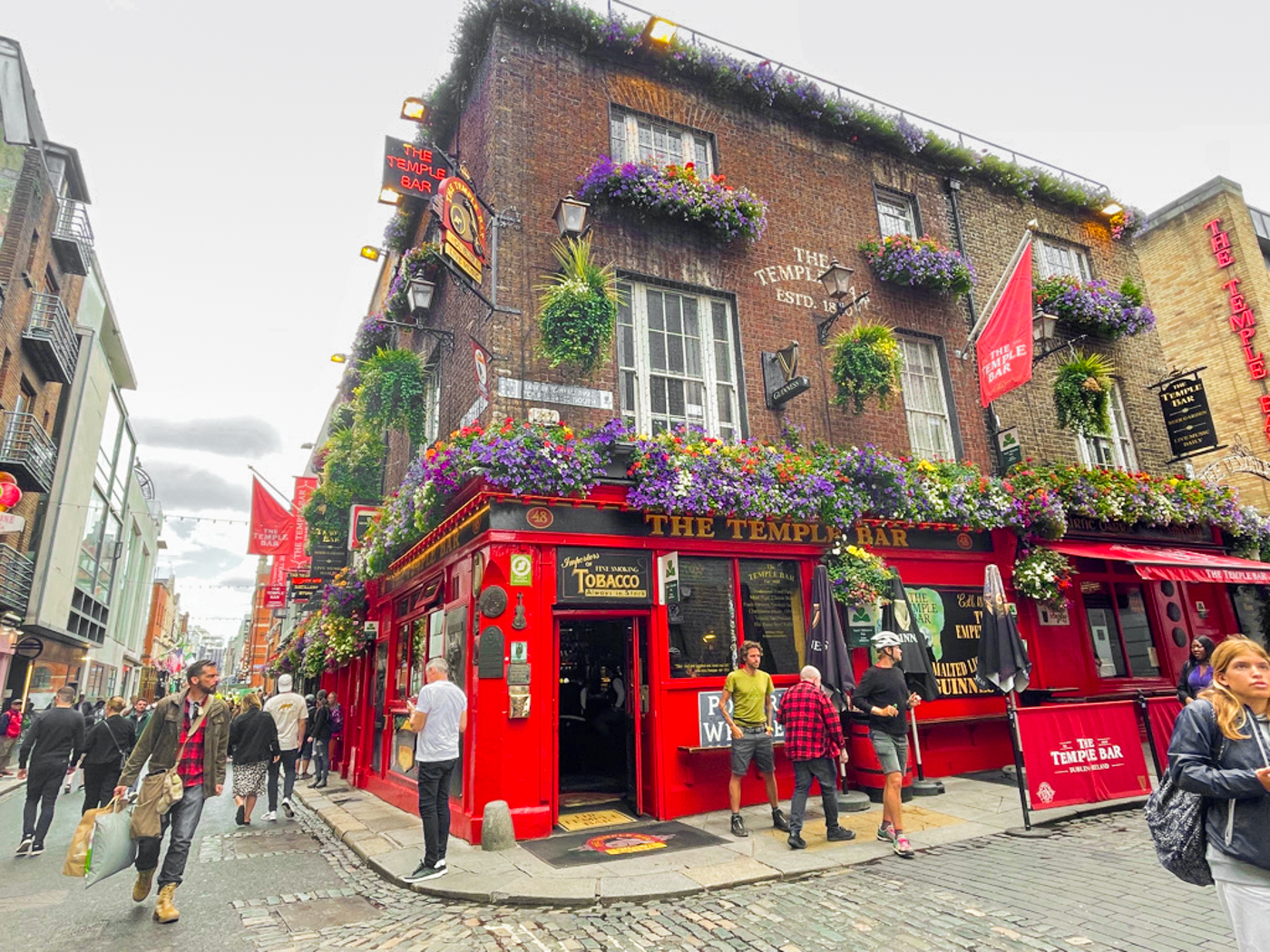
Of course it’s worth it! This is a marvellous city that’s a hell of a lot of fun to spend time in.
Despite Dublin’s big city vibe, its residents are unapologetically welcoming to outside visitors, especially if the encounter happens to take place in a pub. Yes, hanging out in a pub is one of Dublin’s most traditional pastimes. There’s more to this city than its pints, of course, but it’s still an activity I highly recommend.
Away from the alcohol, Dublin is a culture- and literature-infused city that offers up castles, museums, gardens, and a beloved waterway that runs through it all. Grafton Street and Temple Bar are home to a buzzy liveliness, where you can shop, drink, eat, and be merry.
If you like to surround yourself with people, you’ll love basing yourself within these districts, but if you prefer your solitude, you won’t have to go far to find it. Just outside of the city limits, beaches and seaside villages are nestled into Dublin’s stunning coastline. And mountains are every which way, too. I walked the 130 km Wicklow Way this year, which starts in Dublin, and it was amazing.
Here’s a quick breakdown of how much it costs to travel in Dublin, per person per day:
| Hotels | Transport | Food | Activities | Total | |
|---|---|---|---|---|---|
| Backpackers | €79 | €3 | €28 | €20 | €130 |
| Mid-range | €125 | €5 | €50 | €45 | €225 |
| Luxury | €200 | €20 | €80 | €55 | €355 |
Yes, Dublin is expensive, but there are still plenty of ways to cut your costs and find good value for money. In this in-depth article I’m going to go into the prices of absolutely everything in the city, giving you an accurate look into exactly how much you can personally expect to spend.
So how much does it cost to travel in Dublin? Grab yourself a pint of Guinness, because it’s time to find out!
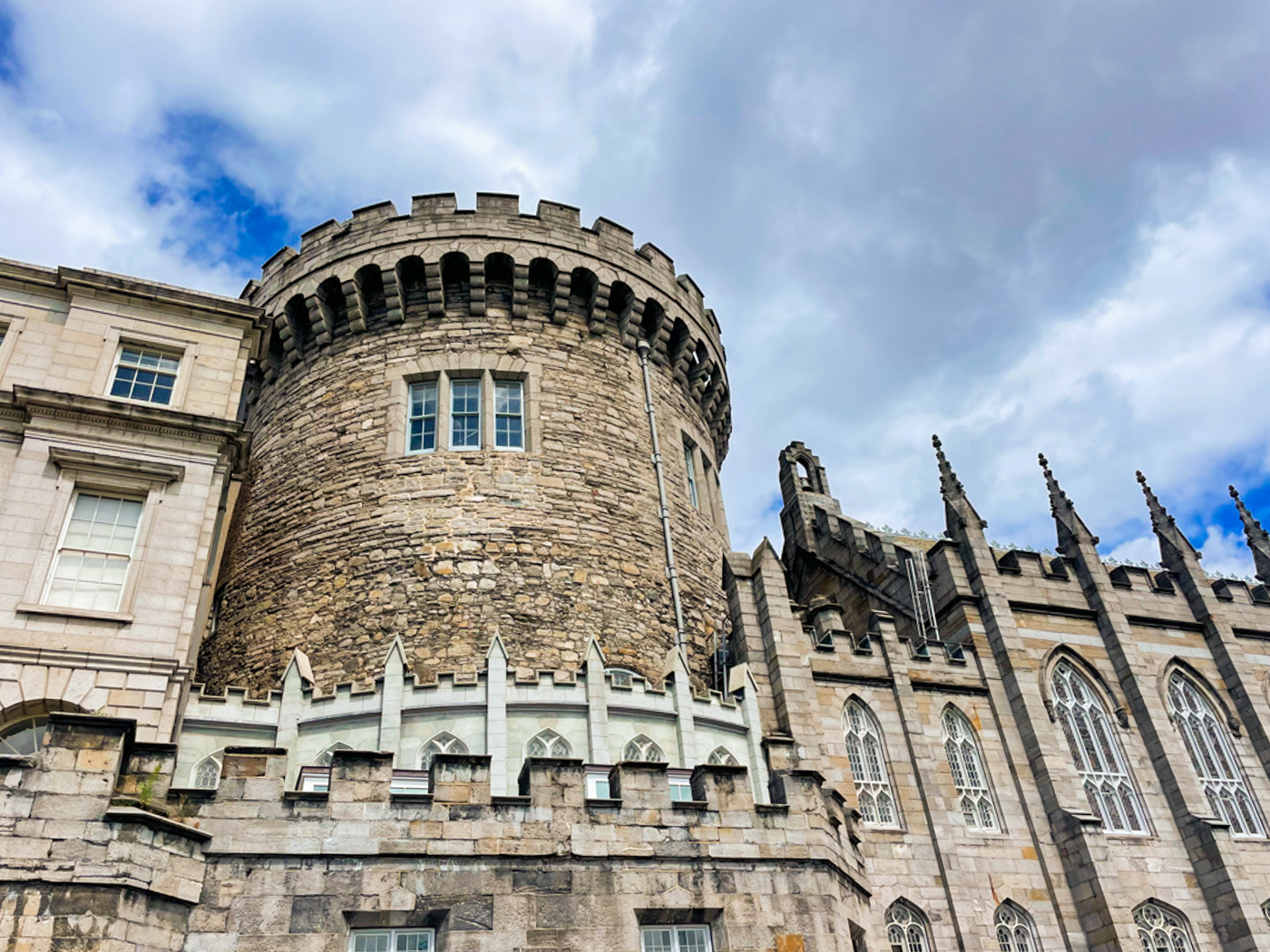
How to Save Money on the Cost of Accommodation in Dublin
As always with travel, it’s possible to cut your accommodation costs down to zero if you have the time and patience to seek out an offer. And when you see the prices of accommodation in Dublin, you might just be able to find said time!
Couchsurfing exists in Ireland — and, of course, Dublin — and allows you to stay with a local for free, sleeping on their sofa and enjoying a local’s insight into life in their country. It’s not the most comfortable of living situations, but if your budget is tight and you don’t mind roughing it, it’s worth sending out a few requests to hosts to see if anything comes of it. You can search for potential hosts on the Couchsurfing site.
Housesitting is another option. This is where you take care of somebody’s house for free while they’re away, and usually look after their pets, too. It’s best for long-term travellers or retirees as you can’t pick and choose dates and destinations, so you need to have a lot of flexibility as to where you go and at what time of year. If you do have that freedom, though, it’s a wonderful way to cut down your travel expenses, soak up some home comforts, and live like a local for a while. Trusted Housesitters is the best site for getting started with housesitting — they usually have several dozen housesits available for Dublin at any one time, so it’s well-worth having a look to see if any coincide with your travel dates.
I’m suspecting, though, that for most of you, you’re not interested in the free accommodation and just want somewhere clean, safe, and affordable to rest your head each night. If that’s the case, there are several options available for you.
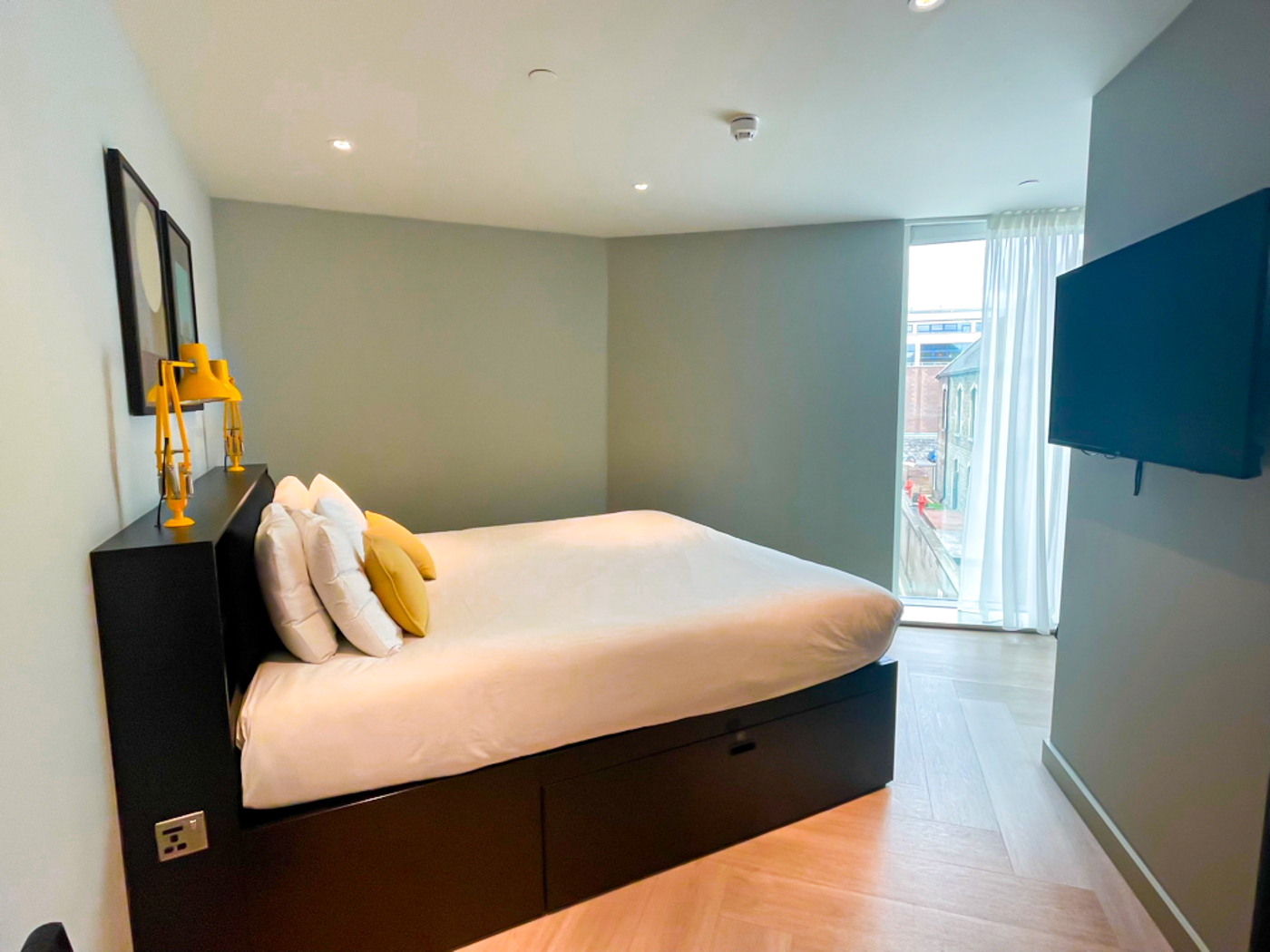
The Cost of Accommodation in Dublin
The best hostel in Dublin: Jacobs Inn Dublin (€79 a night for a six-bed dorm)
Jacobs Inn is a Dublin institution; well-known by backpackers who’ve spent time in the city. It’s clean, modern, and in a great location, with both dorms and private rooms up for grabs. There’s also an optional breakfast for an additional €11. The beds are more of a capsule pod set-up, so you do have a little more privacy than your typical dorm. This is going to be your best option if you’re on a tight budget.
The best budget hotel in Dublin: Staycity Aparthotels Mark Street (€225 a night for a basic double)
For my most recent visit, I chose to stay at the Staycity Aparthotels on Mark Street (my room is pictured above), as it truly felt like it was the only central, well-reviewed, not-crazy-expensive accommodation in the entire city! And it was great! It wasn’t missing anything at all. My room was quiet, the hotel was a five-minute walk from Temple Bar, and the staff were always so friendly! The bed was comfortable, the A/C and heating worked well, and the kitchenette had everything you could need.
The best mid-range hotel in Dublin: The Wilder (€289 a night for a shoebox-sized double room)
Chic and retro décor are best friends in this lovely Dublin hotel. The Wilder perfectly represents elegance but without being void of personality. Located on Adelaide Road, the local neighborhood is ritzy and beautiful, with oversized trees lining its streets. The Wilder has rooms available in various sizes, from “shoebox” (much larger than they sound!) to spacious suites, each with unique furnishings. The restaurants on-site are great, too: the stylish Gin and Tea Room is exactly what it sounds like while the Garden’s specialty is breakfast, with its mirrors, fireplaces, and greenery creating the perfect ambiance.
The best luxury hotel in Dublin: The Marker Hotel (€403 a night for a deluxe double room)
Calling all those with bougie tendencies: the Marker Hotel is for you. The rooftop bar is a sight to be seen; in fact, it must be seen. Posted up in Grand Canal Square, it’s in the heart of the business district putting it at a 20-minute walk to the city center, but hey: you might not want to even leave your hotel. The cocktail bar is exceptional while the Brasserie serves locally-sourced Irish cuisine. The award-winning spa is a relaxation haven that offers a variety of body treatments and facials, and don’t forget about the infinity pool and world-class fitness center. For a final touch, rest in savasana high above the cityscape. Yes, yoga on the rooftop is a hit here. It’s luxury at it’s finest.
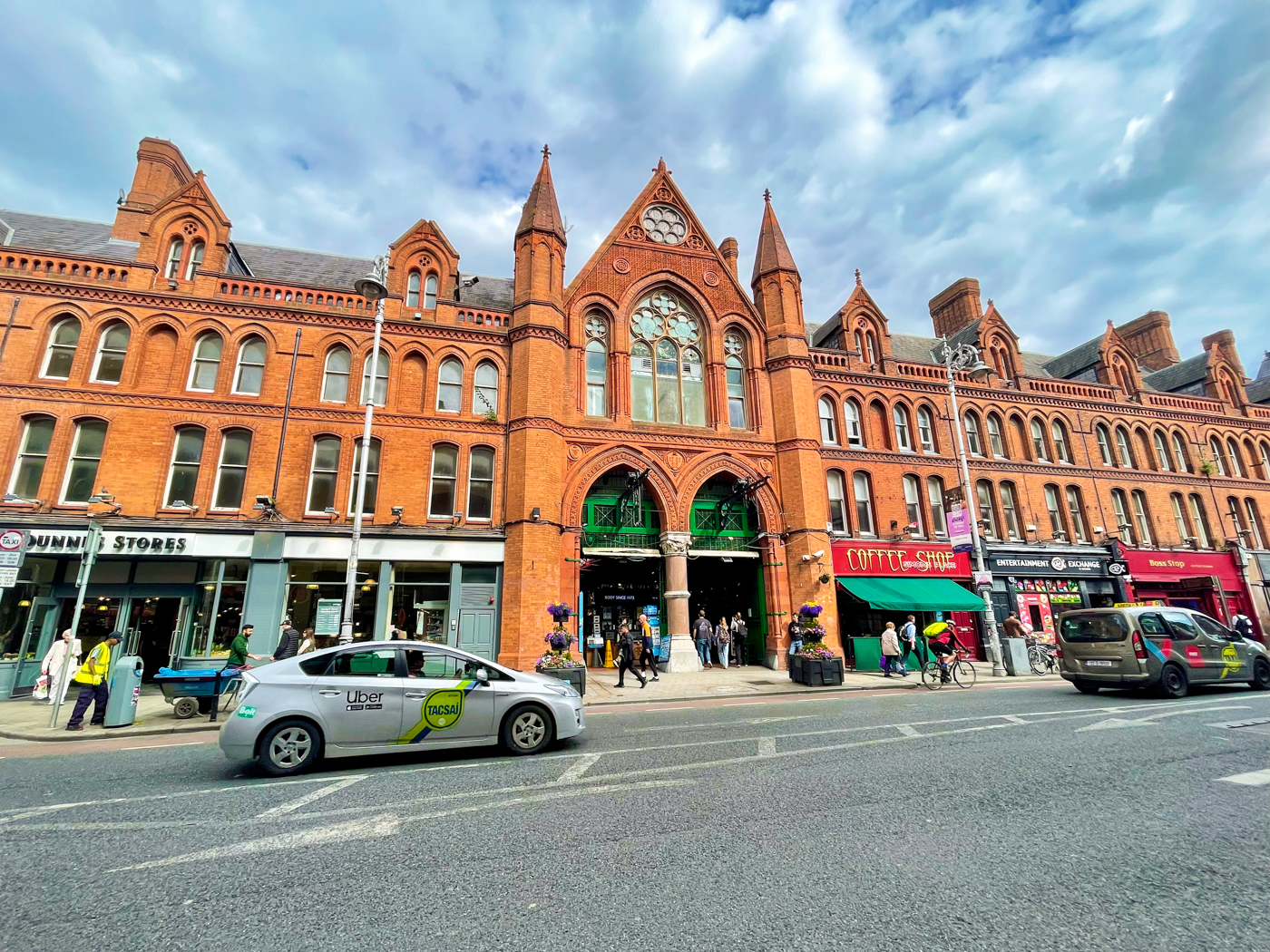
The Cost of Transportation in Dublin
Dublin has it figured out when it comes to getting around.
The transportation options here are ample, clean, safe, and — most importantly — inexpensive.
Getting into the city from Dublin’s airport is surprisingly cheap and easy. You’ll pay just €2.60 to take a local bus from the airport to Temple Bar (don’t bother taking the airport express bus, as it takes a similar amount of time but costs €8; a taxi is around €30). And once you get into the city centre, things only get simpler from there.
If you’ll be staying in Dublin for more than a day, you may want to invest in the Leap Visitor Card: a prepaid travel card that you can use to pay for the local buses, trams, and trains — both within Dublin and the entirety of Ireland. The Leap card makes fares 30% cheaper than buying a ticket on the spot with cash, so if you won’t be walking everywhere, it’s well-worth the investment. You can buy the card in advance from the Leap website and get it delivered to Dublin Airport for your arrival or pick it up from stores once you’re in the city. With it, you’ll pay €1.30 for a single trip or a flat €2 for 90 minutes of rides.
If you’re in town for a long weekend, you may want to invest in the DoDublin Card. The card gives you 72 hours of unlimited access to the Airlink Airport Bus, the DoDublin hop-on hop-off buses, the public bus network and entrance to the six biggest attractions in the city (including the EPIC Immigration Museum and St Patrick’s Cathedral). At €55 per person it makes for a good deal, especially if you’re happy to hit up tons of tourist activities via hop-on hop-off bus!
When you tire of the roads, it’s time to hit the rails.
DART stands for Dublin Area Rapid Transit — the train — and is the best option for longer trips across the city. With stops located throughout the capital, it’s the fastest way to travel, but its speed doesn’t remain within the city limits. It cradles the Dublin coastline on its way to seaside villages and beaches just outside the energetic hum of the city. The DART is also a good option if you plan to venture to cities like Cork, Belfast, or Killarney.
Luas is Dublin’s tram service and offers up two different lines and a ton of notable stops. You can get pretty much anywhere you want to go (or at least close enough) on Luas. Tickets can be purchased at the street-side vending machines but you can also use the Leap card.
As with any major city, Dublin’s nooks and crannies are best discovered on two feet. It’s actually quite a walkable city and I found I didn’t need to use public transport even once during my most recent two-day visit. Most of the major attractions are concentrated within the city centre, so it’s not too onerous to walk from one spot to the next.
If you’re more of a cyclist, bikes are a popular, green, and cheap way to travel around the capital. Dublin Bikes is the local bikeshare company, with very reasonable prices. Use of a bike for a full day is just €3.50, while three days of unlimited use is €5.
If you prefer your transportation private, taxis can be found all over the city — you can hail them on the street or by using the local FreeNow app. Uber does work in Ireland, but it only calls local taxis (as ride-sharing is banned in Ireland) rather than private drivers. Your best bet is to download both apps and see which one is offering the lowest prices for where you need to go.
In terms of taxi prices, you’ll pay a €4.20 initial charge, then €0.46 per minute thereafter. Transport for Ireland has a useful taxi fare estimate tool if you know where you’ll be going in advance.
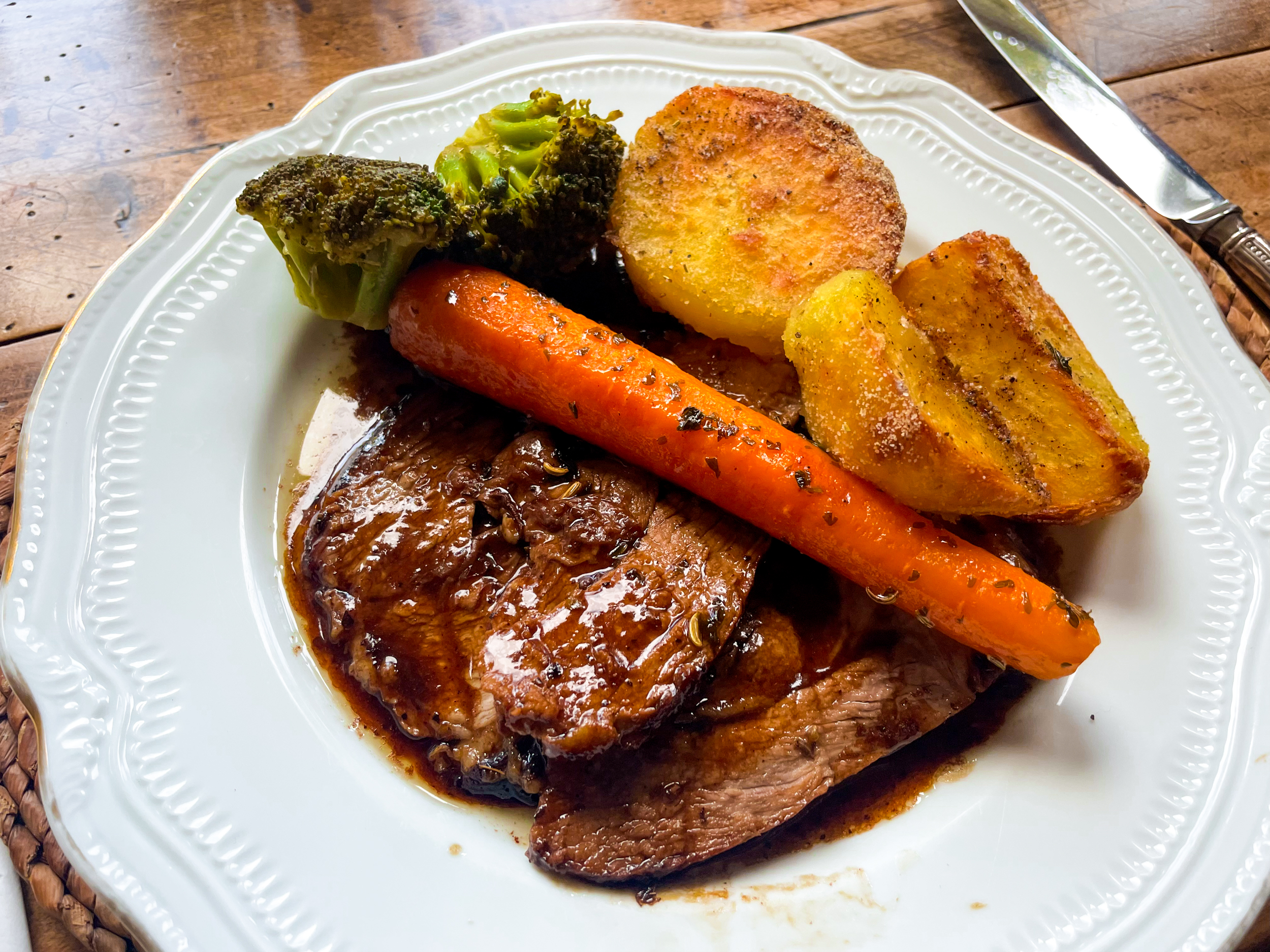
The Cost of Food in Dublin
Ireland doesn’t have the best reputation when it comes to its food scene, but much of the stereotypes are based on its past. In 2024, Dublin is home to a vibrant array of cuisines that feature far more than meat and potatoes. (Although as somebody who counts potatoes as their favourite food group, I can’t deny that they were particularly good here.)
Still, it’s well-worth dipping into those traditional foods and sampling them while you’re in town. Some of my favourite dishes include a Full Irish breakfast, Irish stew, soda bread, boxty (a mix between a hash brown and a pancake), and colcannon (mashed potatoes with cabbage). Plus, you can’t come to Dublin and not try its Guinness!
There’s lots of international options in the city, too, from Indian to Nepalese; Ethiopian to Japanese; Brazilian to Korean. Budget eats exist, too, like kebabs and pizzas plus other takeaway treats.
Let’s go through some likely options you’ll run into for breakfast, lunch, and dinner — plus the typical prices you’ll pay for food and drink in Dublin.
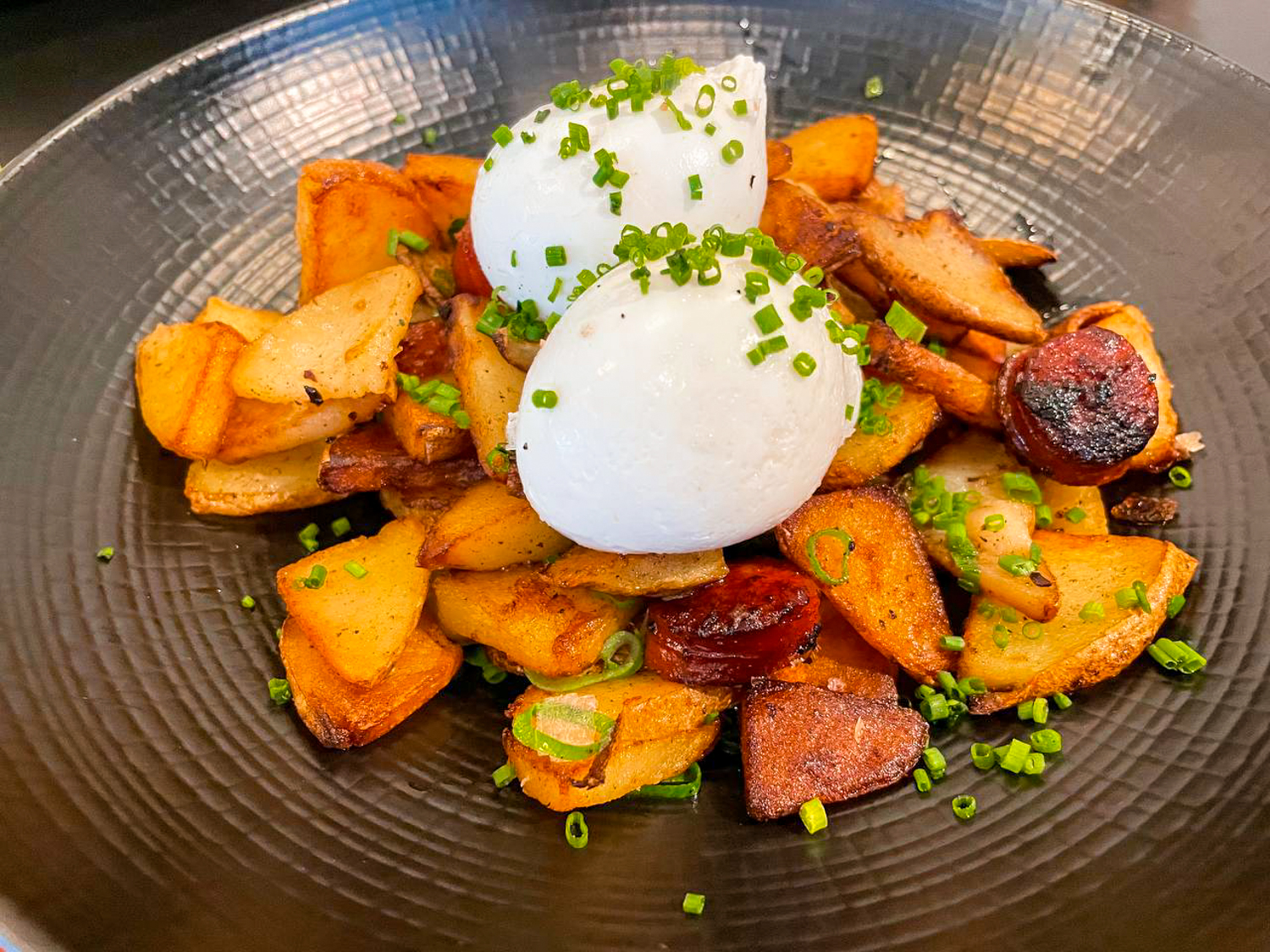
You’ll never struggle to find a decent breakfast here. I had so many delicious meals while I was in town! If you want to go traditional, look no further than the Irish Breakfast. Similar to the Full English, you’ll be blessed with a sizeable plate of bacon, sausages, baked beans, eggs, mushrooms, tomatoes, black and white pudding, and toast. Yes, it’s a lot, but it can also help you save money, as you’ll likely want to skip lunch after eating one! On average, you’ll pay €15 for the dish.
If you prefer your breakfasts to be lighter, brunchy, or with a hint of hipster, never fear. There’s plenty of cool cafes, too. I mentioned that I stayed in the Staycity hotel in the accommodation section of this guide, and I found that there were so many fantastic cafes around this area (the Temple Bar & Trinity College suburbs).
As an example, I loved the cafe As One, which was located a few minutes from the hotel. There, I paid €14 for the dish pictured above: Irish potatoes, chorizo, spring onions, and two poached eggs, while my partner paid €14 for a breakfast muffin (an English muffin, that is. This was a savory dish, with the muffin filled with sausage, fried eggs, black pudding, cheddar, and with a side of potatoes). At Tang, I paid €10.50 for a shakshuka and my partner paid €12 for fried eggs on toast with a side of chorizo.
Those are pretty average prices for a breakfast/brunch in the centre of town: you can expect to pay €10-15 for a decent-sized meal from a well-reviewed place.
In terms of budget options, you can grab a small bowl of Irish porridge for as little as €5, toast with butter and jam comes in at €4, and a croissant or pan au chocolat can be as little as €3.
What about lunches?
Most cafes offer up sandwiches for a budget lunchtime snack, and I have to give a shout-out to the Pig and the Heifer Deli for producing some of the best I had in the city. I recommend the serrano ham and goats cheese, in particular, for a price of €8.25, but I was also impressed with the Bavarian sandwich (ham, sauerkraut, cranberry, Wensleydale cheese, mustard, and pickle) for €8.50.
In Dublin, the pubs aren’t just for dinners, so do pop into a cosy-looking one if you’re hungry and craving a hot meal. Fish and chips are a lunchtime staple and range between €12 and €17, depending on how upmarket the establishment is. If you’re looking for something light, you can almost always grab a soup for the low price of €7 while a small salad comes in at around €11. Keep in mind that you’ll pay more for a meal in Temple Bar, as that’s where all the tourists are, so if you’re looking to save money, head outside the area for cheaper eats.
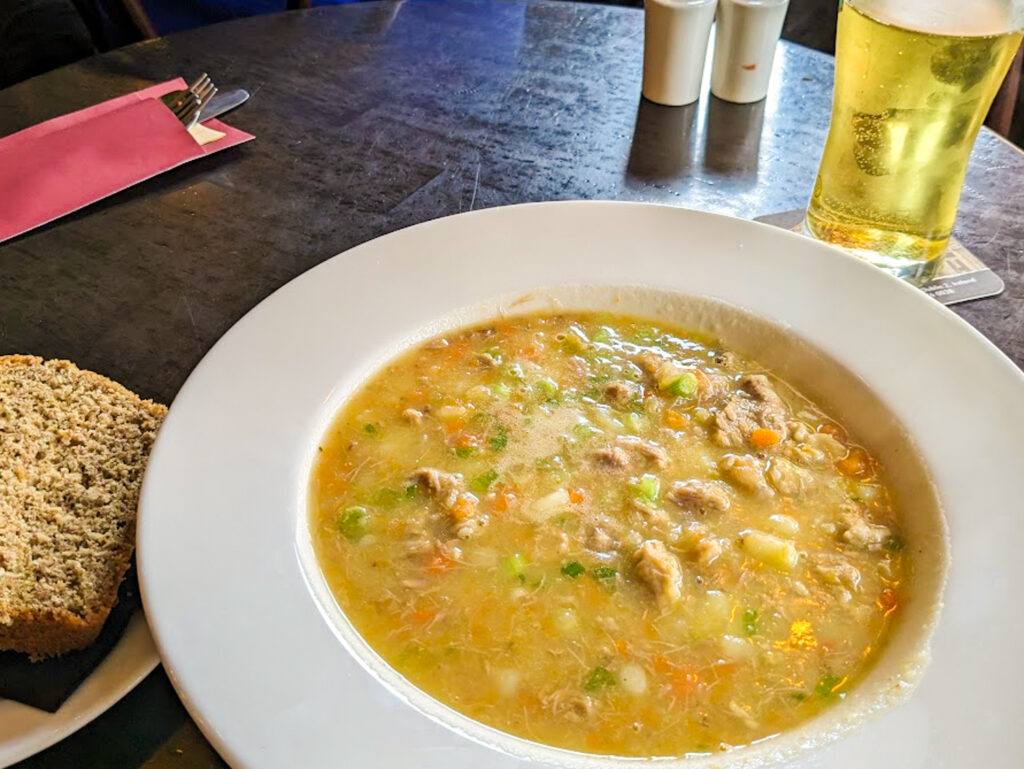
Dinners often take place in pubs, too — we are in Ireland, after all — but there are also plenty of sit-down restaurants featuring diverse cuisines from around the world.
I mentioned the Irish stew in my photo caption above and yes, this is something I highly recommend trying while you’re in town! This was my first meal after arriving in Dublin and I sure chose a good one! I paid €16 for the stew from Lincoln’s Inn — pictured above — which was accompanied by some delicious soda bread. In general, you can expect to pay in the range of €15-25 for a pub meal; burgers and fish and chips will be cheaper, while steak will be up at the top end.
In terms of average costs for international eats, you’ll pay €19 for an Indian curry, €17 for a pizza from a nice Italian restaurant, €14 for nachos, €11 for a lamb kebab, or €9 for a falafel pita.
In terms of alcohol, you can’t think of Dublin without imagining a cool glass of Guinness. A pint of the good stuff will set you back between €5 and €7, depending on how touristy the pub is. Wines are roughly €7 for a 175ml glass, while cocktails can run between €9 and €13.
For non-alcoholic options, a latte or flat white is usually priced at around €4 with a cup of tea at €3. Soft drinks are also priced at around €3, whether you’re in a pub, cafe, or restaurant.
To summarise, you can expect to spend €12 for a sit-down breakfast, €8 for a lunchtime sandwich, and €18 for a pub dinner, plus around €15 for a couple of drinks throughout the day. This would give you an average daily food and drink spend in Dublin of just over €50 a day.
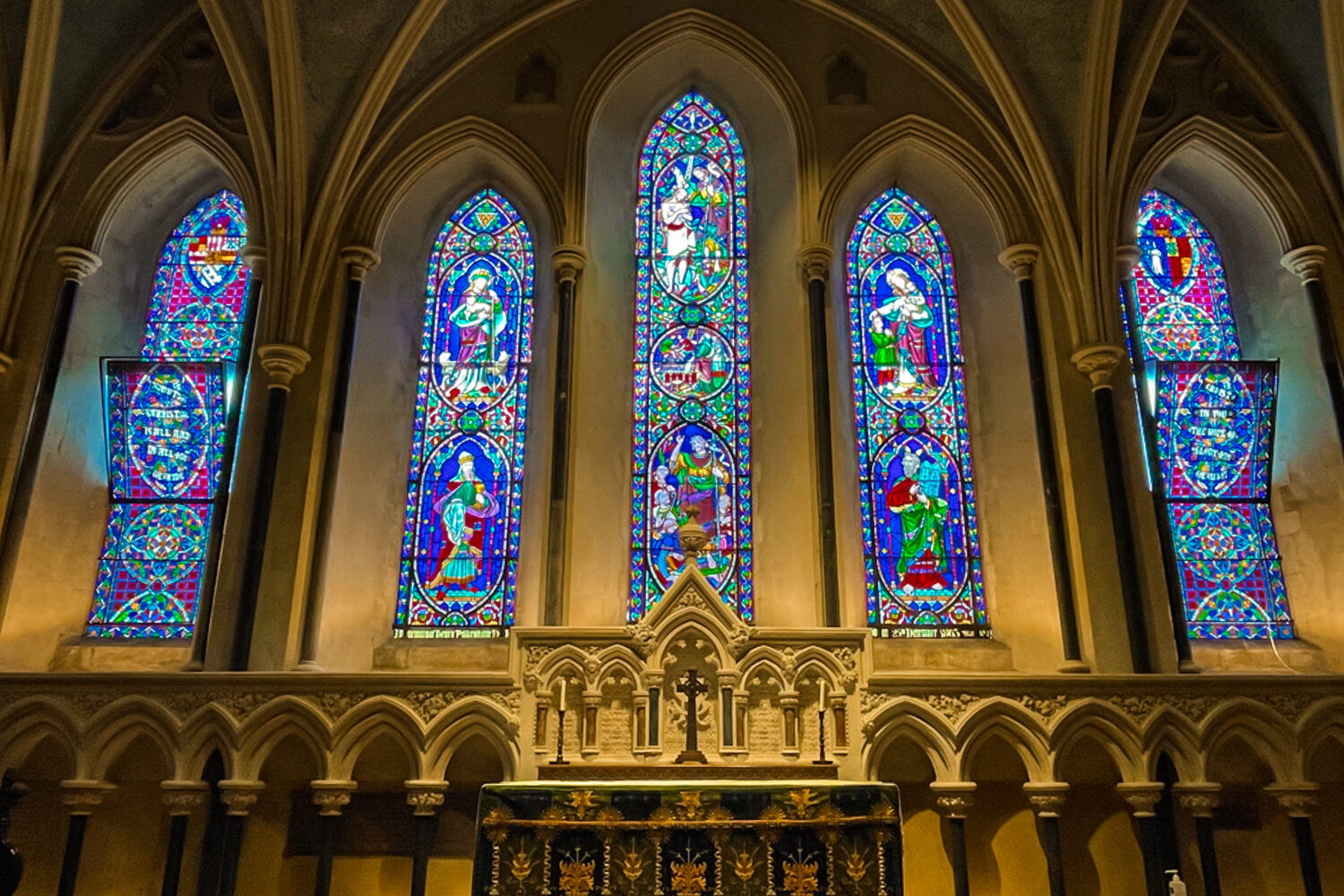
The Cost of Activities in Dublin
Dublin is densely packed with activities, ranging from day-drinking and folk music to museums and cathedrals.
It was the last item on the list that really blew me away: the cathedrals in Dublin were seriously impressive. I shouldn’t have been surprised; Ireland is a deeply religious country and the architecture only served to reinforce that fact.
It costs €9 to enter St Patrick’s Cathedral and €10.50 for Christ Church Cathedral. The landmarks were well-worth the cost of entry, in my opinion — I paid for both entrance fees through GetYourGuide so that I had all of my tickets and tours in one place.
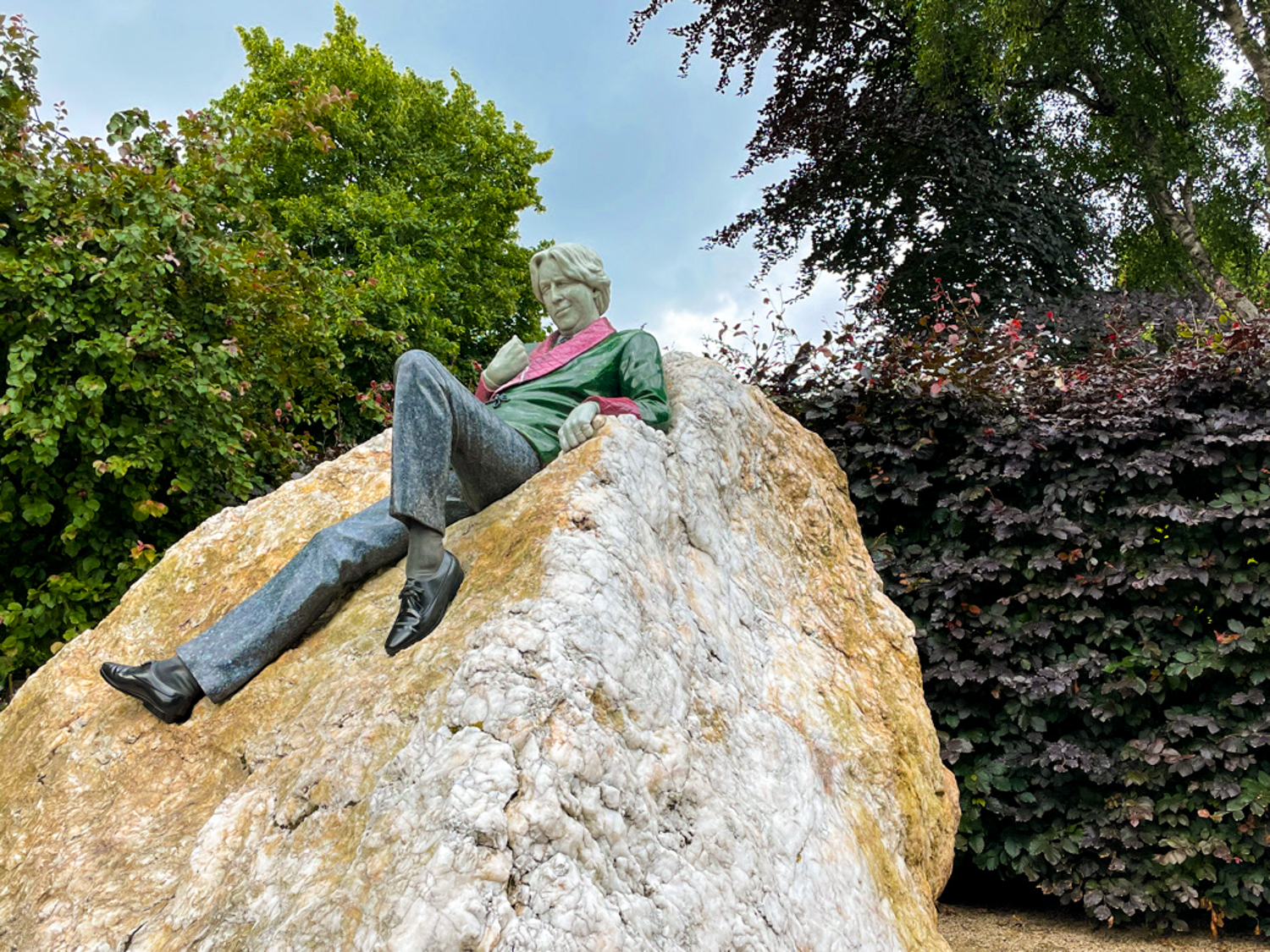
If you love your literature, there’s perhaps no greater city to spend some time than Dublin. So many authors, writers, and creatives have called this city home! Wander through the streets and parks and you’ll stumble across heritage plaques dedicated to these literary heroes. At times, the list of writers felt endless: Oscar Wilde, James Joyce, Samuel Beckett, Bram Stoker, W.B. Yeats, George Bernard Shaw… so many big names!
The Museum of Literature (€13.50) is a great place to start your writer-themed explorations, but the Book of Kells is what’s truly going to excite you. This world-famous manuscript is potentially the oldest book in the world; it has to be seen to be believed. You can catch a glimpse of the tome in the breathtaking Old Library at Trinity College Dublin — it costs €18.50 to enter and you can buy tickets through the college website.
One activity that’s top of the tourist hit list is, of course, the Guinness Storehouse (€30). This seven-story building is where you’ll learn all about the 250-year history of the world-famous stout. End your tour at the Gravity Bar, where you can enjoy a free pint and take in some of the best panoramic views of Dublin.
For those of you who prefer whiskey, hit up the Jameson Distillery for a €30 tour of the premises. You’ll find out all about the story of John Jameson, learn what goes into the beloved spirit, and get to enjoy a free cocktail at the bar afterwards.
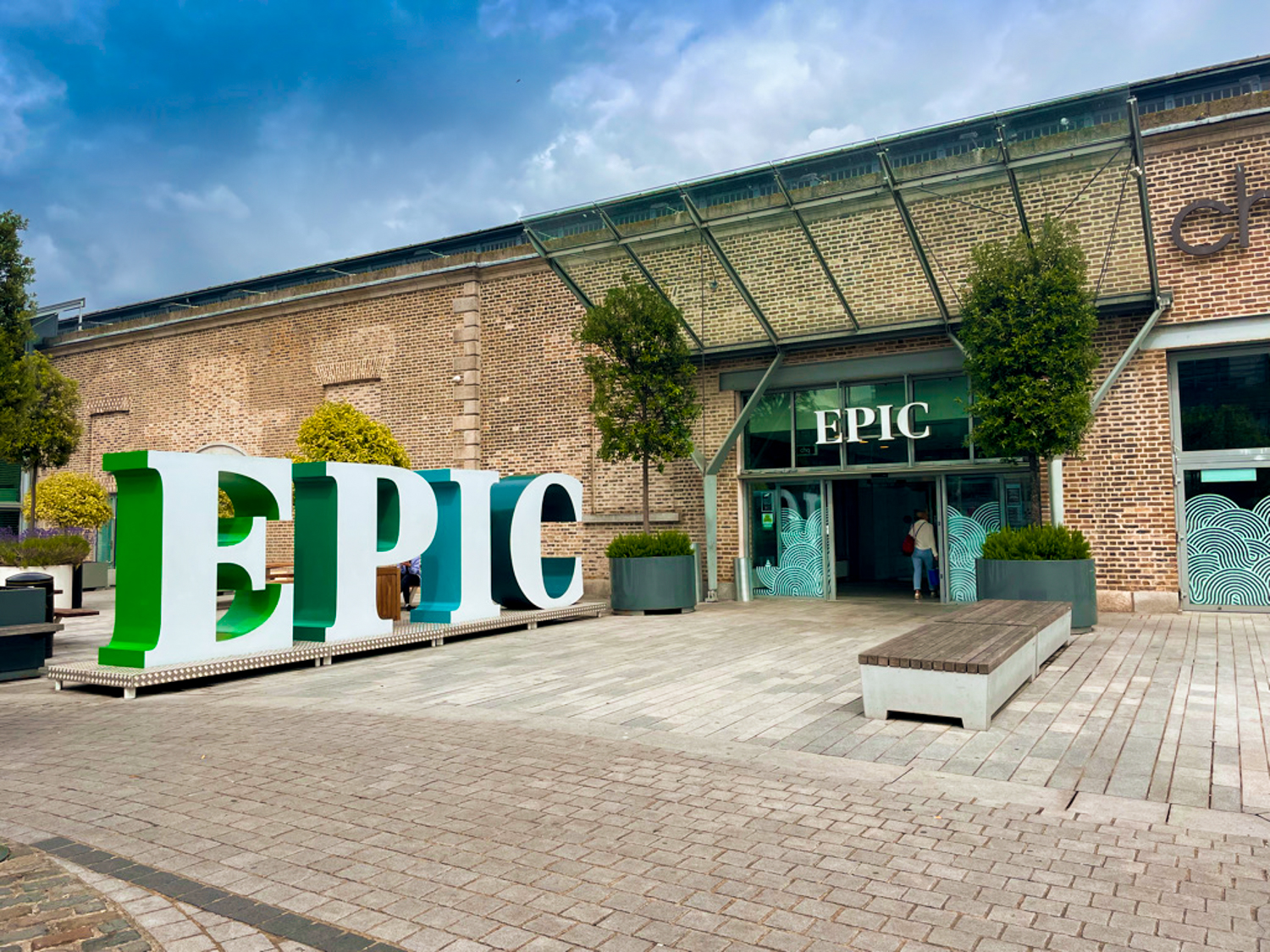
In terms of museums, there’s only one that I consider essential and that’s the award-winning EPIC Irish Emigration Museum (€19.50). It was a fascinating way to spend an afternoon! This museum chronicles the harrowing, inspiring experiences of the millions of Irish emigrants who left their home in search of a better life. It’s immersive, innovative, and 100% worth the entrance fee.
If you’re more of a museum-goer than I am, there’s lots on offer; all with reasonable entrance fees. For example, The Little Museum of Dublin is €13, the Kilmainham Gaol is €8, while the Irish Whiskey Museum is €22.
Dublin is home to plenty of free activities, too, for those of you who are on a tight budget. Wandering around the bustling Temple Bar district provides ample opportunity for people-watching and photo-taking. There, you’ll find some of the most photogenic pubs in the world. Speaking of people-watching, be sure to take a stroll down lively Grafton Street to check out the buskers or kick back and relax in St Stephen’s Green.
The Ha’penny Bridge from 1816 is a scenic must-walk-across, and if you like your city breaks with a side of adventure then head out for a hike in the Dublin Mountains. Dublin Castle is free to explore, while the peaceful Garden of Remembrance was a lovely spot for taking a breather. In terms of free museums, the National History Museum is a particularly good one to go for.
There’s even a free walking tour to jump on.

Finally, regular readers will already know that I love a good day trip. Every time I rock up in a new city, I turn straight to GetYourGuide and filter their activities by day trips. To me, it’s an easy and efficient way to explore more of a country beyond its capital. In Dublin, it was no different — and to my delight, there were so many options for day-tripping this compact country.
There’s three main day trips that are worth doing.
The first goes to the Wicklow Mountains, Glendalough, and Kilkenny and is priced at €40. This one’s great for nature enthusiasts, history buffs, and lovers of picturesque towns.
The second takes you to the Cliffs of Moher, the Burren, and Galway for €78. This is the perfect option for anyone who loves dramatic landscapes, walks in nature, and traditional culture.
Then you’ve got the Giants Causeway, Dark Hedges, Dunluce, and Belfast for €88. This one is for anyone who’s interested in geological formations, Northern Irish history, and Game of Thrones (Dark Hedges featured in the series).
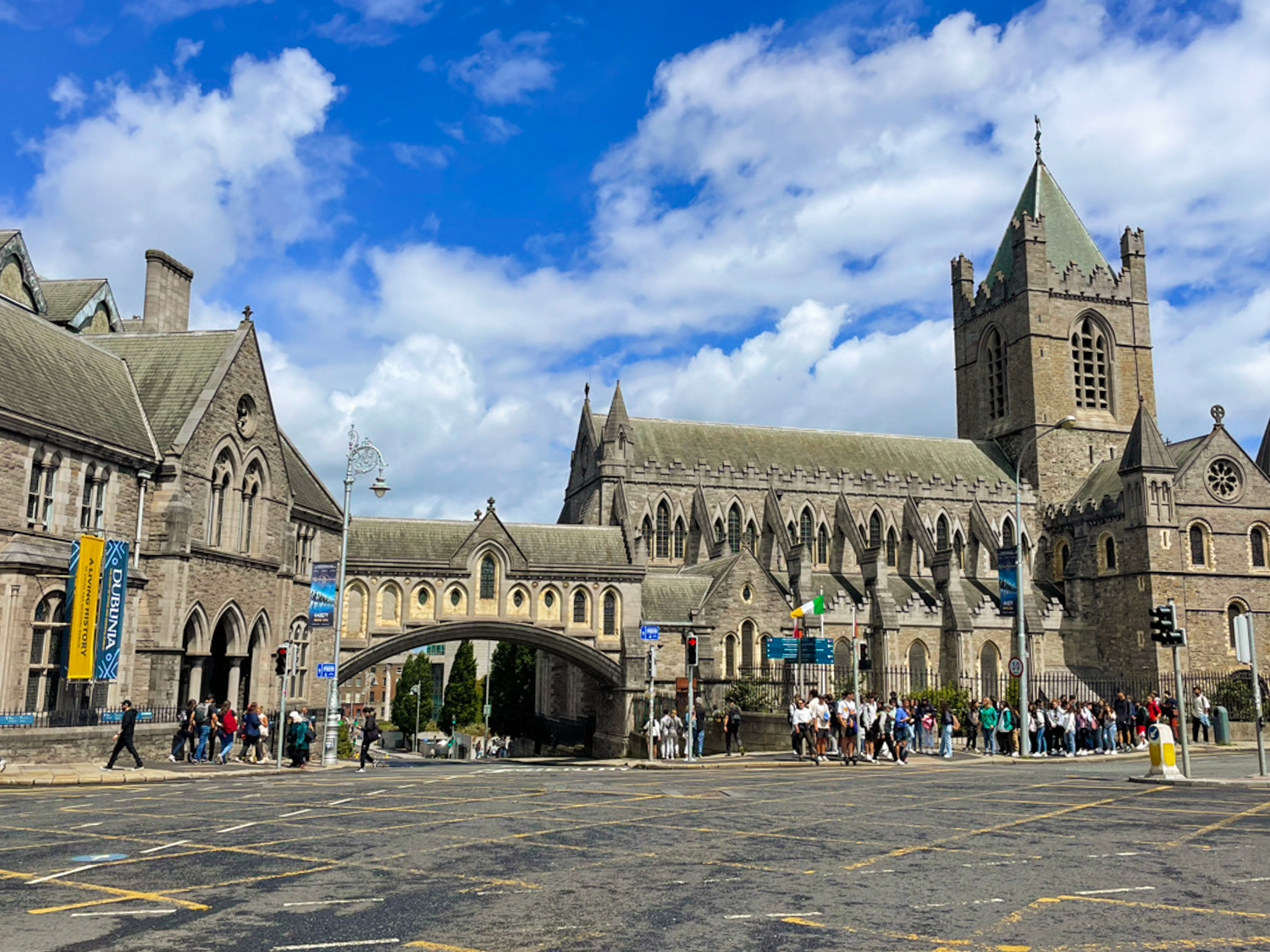
The Cost of Miscellaneous Expenses in Dublin
A SIM card: If you live in the EU or the U.K., you won’t need to worry about a SIM card, as you’ll be able to use data within Ireland without being charged. If you’re outside this area, however, you’ll have to buy a SIM.
I’m a big fan of Airalo, which sells local eSIM cards for travellers. What that means is that you can buy a virtual local SIM card online before you arrive in Ireland, and then as soon as you land in the country, you can switch on your data and start using it. It makes getting connected so easy and now I’ll never go back to physical SIMs.
I paid €9 for 3 GB to use for 30 days in Ireland.
Travel insurance: If you’ve read any other posts on Never Ending Footsteps, you’ll know that I’m a great believer in travel insurance. I’ve seen far too many Go Fund Me campaigns from destitute backpackers who are unexpectedly stranded in a foreign country after a scooter accident/being attacked/breaking a leg with no way of getting home or paying for their healthcare. These costs can quickly land you with a six-figure bill to pay at the end of it.
In short, if you can’t afford travel insurance, you can’t afford to travel.
Travel insurance will cover you if your flight is cancelled and you need to book a new one, if your luggage gets lost and you need to replace your belongings, if you suddenly get struck down by appendicitis and have to be hospitalised, or discover a family member has died and you need to get home immediately. If you fall seriously ill, your insurance will cover the costs to fly you home to receive medical treatment.
I used SafetyWing as my travel insurance provider in Ireland. They provide worldwide coverage, don’t require you to have a return ticket, and even allow you to buy coverage after you’ve left home. I paid €1.50 a day for this.

How Much Does it Really Cost to Travel in Dublin?
It’s time to tally up all of my travel expenses and share how much it costs to travel in Dublin! I’ll break it down into three budgets: travellers on a tight budget, mid-range budget, and high-end budget.
For budget travellers, you can expect to spend per person:
Accommodation: €79 per day on a dorm bed in a hostel
Transportation: €3 per day for the local bus to/from airport, then a couple of buses
Food: €28 per day
Activities: €20 per day for entry to the EPIC Museum, Guinness Storehouse and St Patrick’s Cathedral
Total amount for a budget trip to Dublin: €130 per person per day
For mid-range travellers, you can expect to spend per person:
Accommodation: €125 per day on a well-reviewed, central guesthouse
Transportation: €5 per day for the local bus to/from airport, then occasional buses
Food: €50 per day
Activities: €45 per day for entry to the EPIC Museum, Guinness Storehouse and St Patrick’s Cathedral, plus a day trip
Total amount for a budget trip to Dublin: €225 per person per day
For luxury travellers, you can expect to spend per person:
Accommodation: €200 per day on the best hotel in town
Transportation: €20 per day for regular taxis
Food: €80 per day
Activities: €55 per day for entry to a couple of museums, the Guinness Storehouse, both main cathedrals, plus a couple of day trips
Total amount for a budget trip to Dublin: €355 a day
Phew! I did warn you that prices in Dublin have skyrocketed this year! So what do you think? Are these prices more or less than what you were expecting?
Other Articles I’ve Written About Ireland
🇮🇪 The Cost of Travel in Ireland: A Detailed Budget Breakdown
☘️ The Absolute Best Things to Do in Dublin, Ireland







No Comment